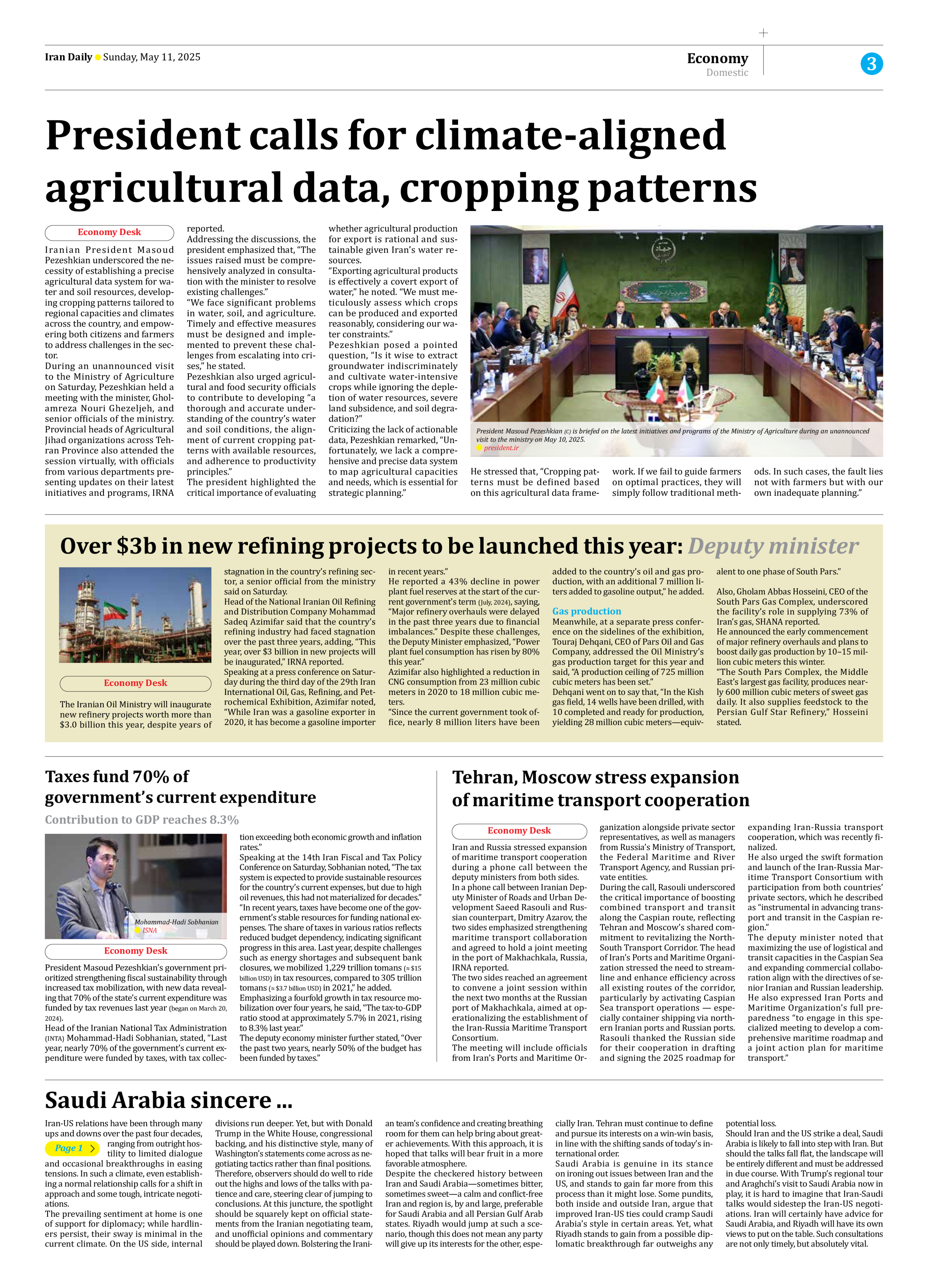
President calls for climate-aligned agricultural data, cropping patterns
Iranian President Masoud Pezeshkian underscored the necessity of establishing a precise agricultural data system for water and soil resources, developing cropping patterns tailored to regional capacities and climates across the country, and empowering both citizens and farmers to address challenges in the sector.
During an unannounced visit to the Ministry of Agriculture on Saturday, Pezeshkian held a meeting with the minister, Gholamreza Nouri Ghezeljeh, and senior officials of the ministry. Provincial heads of Agricultural Jihad organizations across Tehran Province also attended the session virtually, with officials from various departments presenting updates on their latest initiatives and programs, IRNA reported.
Addressing the discussions, the president emphasized that, “The issues raised must be comprehensively analyzed in consultation with the minister to resolve existing challenges.”
“We face significant problems in water, soil, and agriculture. Timely and effective measures must be designed and implemented to prevent these challenges from escalating into crises,” he stated.
Pezeshkian also urged agricultural and food security officials to contribute to developing “a thorough and accurate understanding of the country’s water and soil conditions, the alignment of current cropping patterns with available resources, and adherence to productivity principles.”
The president highlighted the critical importance of evaluating whether agricultural production for export is rational and sustainable given Iran’s water resources.
“Exporting agricultural products is effectively a covert export of water,” he noted. “We must meticulously assess which crops can be produced and exported reasonably, considering our water constraints.”
Pezeshkian posed a pointed question, “Is it wise to extract groundwater indiscriminately and cultivate water-intensive crops while ignoring the depletion of water resources, severe land subsidence, and soil degradation?”
Criticizing the lack of actionable data, Pezeshkian remarked, “Unfortunately, we lack a comprehensive and precise data system to map agricultural capacities and needs, which is essential for strategic planning.”
He stressed that, “Cropping patterns must be defined based on this agricultural data framework. If we fail to guide farmers on optimal practices, they will simply follow traditional methods. In such cases, the fault lies not with farmers but with our own inadequate planning.”







